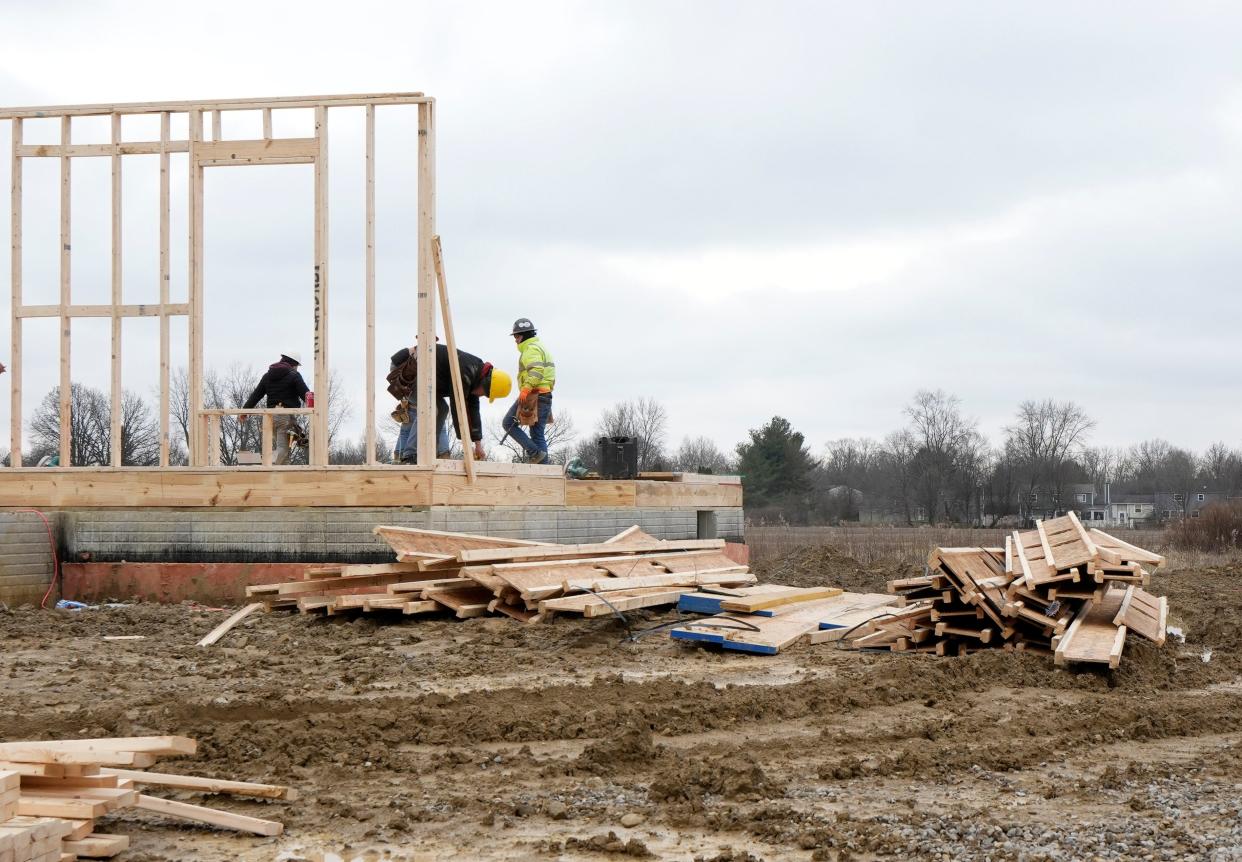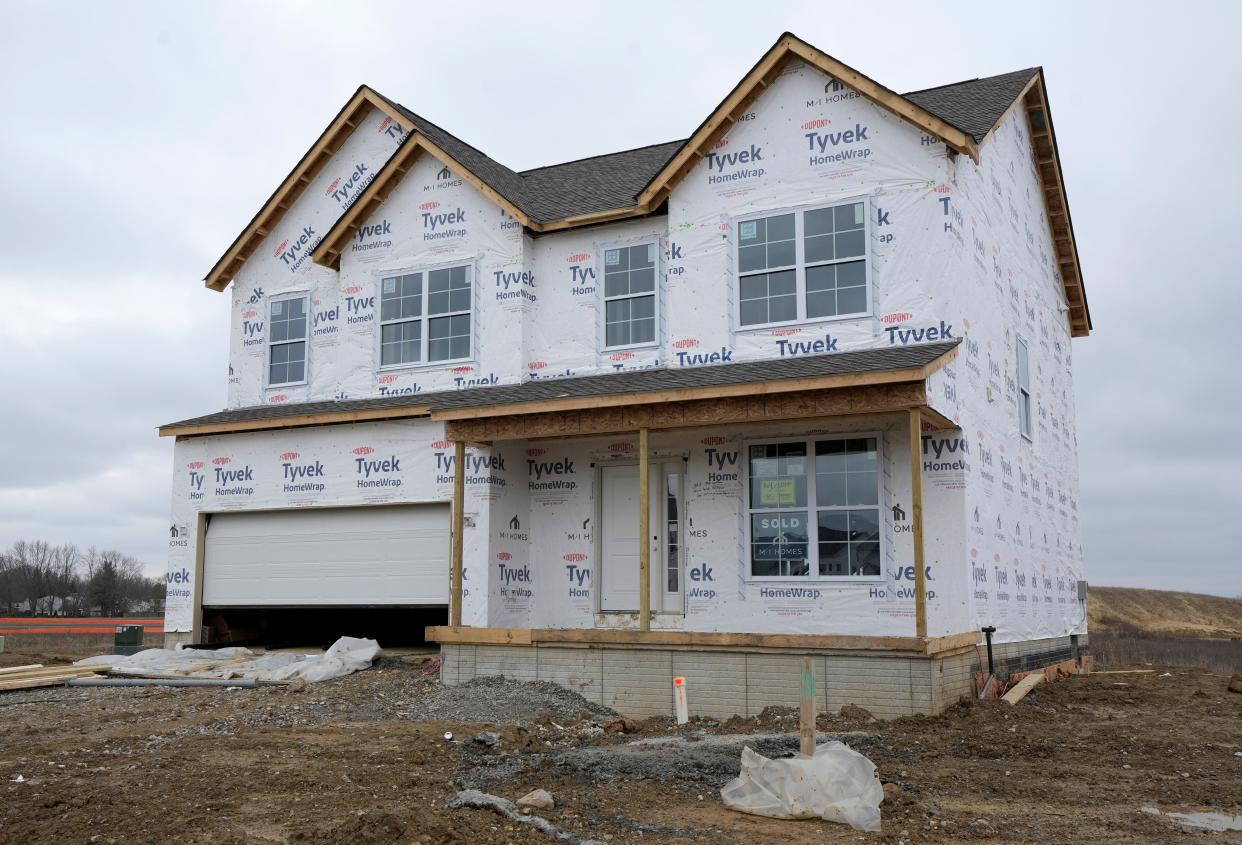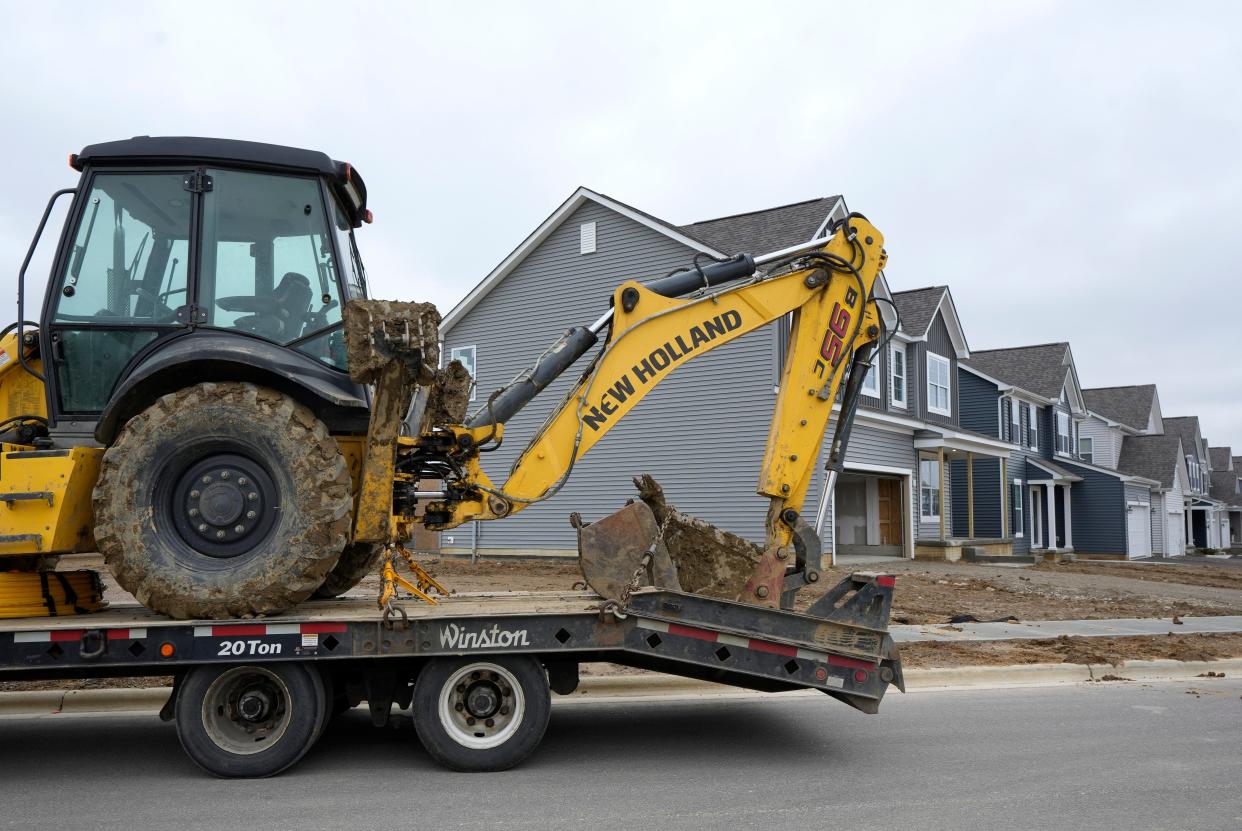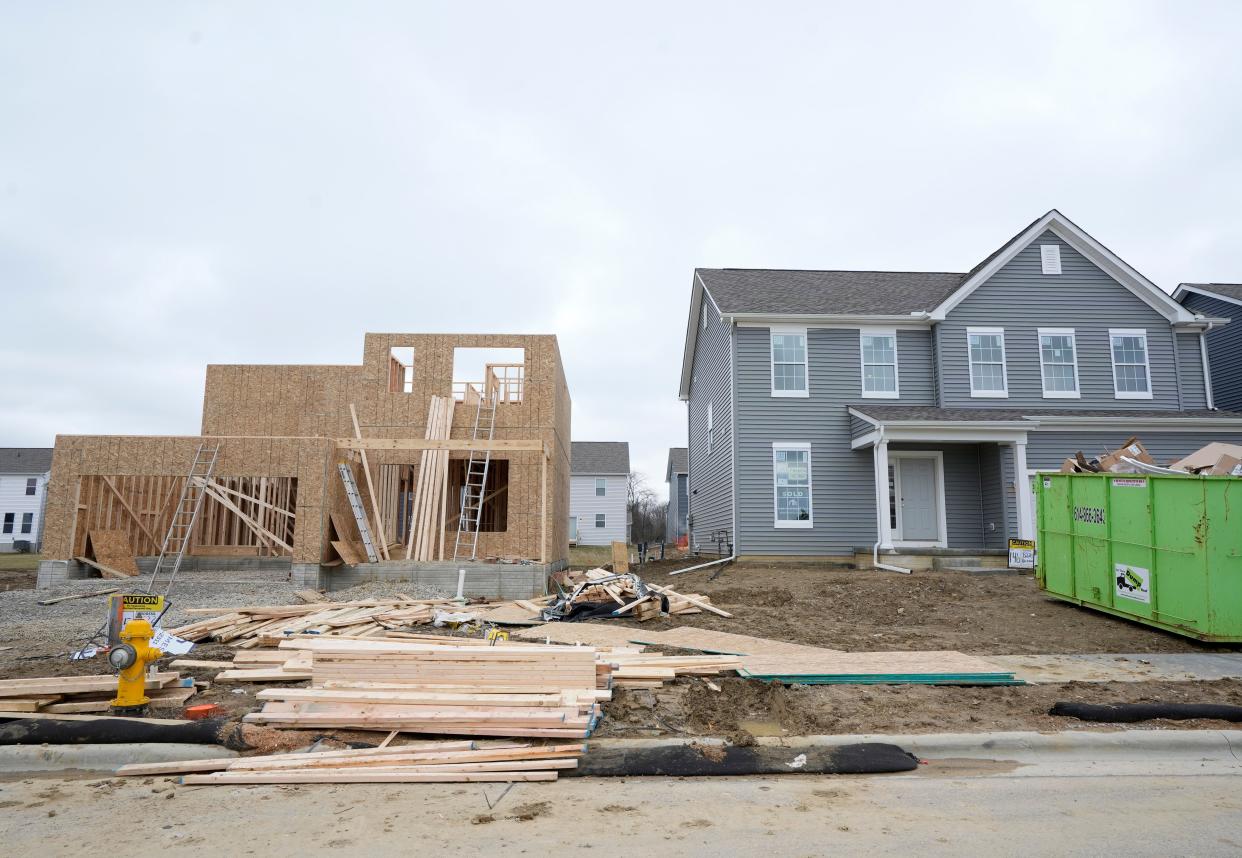Ending referendums and township zoning pitched as solutions to Columbus housing crisis

Ohio homebuilders are pushing state lawmakers to eliminate local zoning referendums, create a tax-abatement program that doesn't require school-board approval, and other policies that would make it easier for companies to build more homes.
They say the lack of new homes is slowing growth in central Ohio and that builders are not meeting demand statewide.
"For the last 15 years in central Ohio, we've underbuilt," said Kenny McDonald, president and CEO of the Columbus Partnership economic development organization. "Supply and demand are just out of balance."
More: Columbus-area home prices top record high for 2023
The Building Industry Association of Central Ohio's report, "Ohio Housing Policy White Paper: Strategies to Address Ohio's Housing and Economic Challenges," was presented Wednesday morning at the Ohio Chamber of Commerce.

It recommends several policy changes. Among them:
Create a Governor's Housing Council that would include developers, local government, business and community leaders who would advise the governor on how Ohio can address the housing crisis, establish housing as a statewide concern, and adopt a comprehensive strategy for housing development.
Regulate small, non-limited home rule township zoning at the state level that would put zoning in the hands of county government.
Enact state legislation that permits residential development where retail zoning now exists.
Create a new Ohio Housing Infrastructure Fund of $250 million to offer competitive grants for large and small cities to build dense residential projects.
Increase the amount of funding from $100 million a year to $400 million for the state's Transformational Mixed Use District Program.
Eliminate referendums for zoning decisions.

"Local zoning decisions in Ohio involve a substantial amount of time, public input, public hearings, and ultimately a vote by local government officials," the paper says. "Permitting a referendum vote on the zoning decision among voters, the majority of which will not have access to any of the facts related to the zoning decision, creates an unpredictable business model for the creation of residential development."
The report stated that Indiana, Tennessee, and Texas do not use referendums for local zoning decisions, and that 22 states do not have any initiative or referendum process.
"There are simply too many boxes to check to get a house built in central Ohio," said Jon Melchi, executive director of the central Ohio BIA.
The report, prepared by The Montrose Group LLC, a Columbus-based economic development and lobbying company, said central Ohio needs to build 18,000 homes and apartments a year to keep up with demand but is taking out only 13,000 permits, which drives up housing costs.
"We need housing of all stripes and shapes in Ohio," Melchi said.
The lack of new homes, the report claims, contributed to central Ohio's population growing 17.4% over the past decade, lagging metro areas of Charlotte (56%), Austin (40%), Nashville (28%) and Indianapolis (21%).
More: As Columbus booms, its suburbs limit affordable housing options
The group also wants the state to give cities and counties the power to sign off on residential tax abatements without school board approval.
"News reports are full of local school boards denying approval for large-scale economic development projects all over the state of Ohio," the report says. "In some cases, these school districts are in Licking County and are denying residential development that could build workforce housing needed for workers at the planned Intel facility."

The report also recommends extending and expanding tax credit programs, creating an Ohio Rural Housing Loan Program, and streamlining Ohio's property tax appraisal system.
Some communities have also said a lack of housing is hindering economic development efforts. In October, the Union County Chamber of Commerce released a statement that the county had more than 8,300 unfilled jobs and an average home-sale price of more than $430,000.
"Ultimately, if employers cannot find workers to fill these positions, the community decides to slow housing development, and the home sale price point stays at $430K+, our community’s quality of life will be in peril," the county chamber said.
Meanwhile, Columbus officials are in the midst of revamping the city's 70-year-old zoning code that would make it easier for developers to build housing, and which concerns some who believe they won't have enough of a say as to what is built in their areas. The city has also expanded tax abatements for new housing throughout the city, instead of in blighted pockets.
mferench@dispatch.com
@MarkFerenchik
jweiker@dispatch.com
@jimweiker
This article originally appeared on The Columbus Dispatch: Ohio builders pitch ending referendums, local zoning to spur housing
